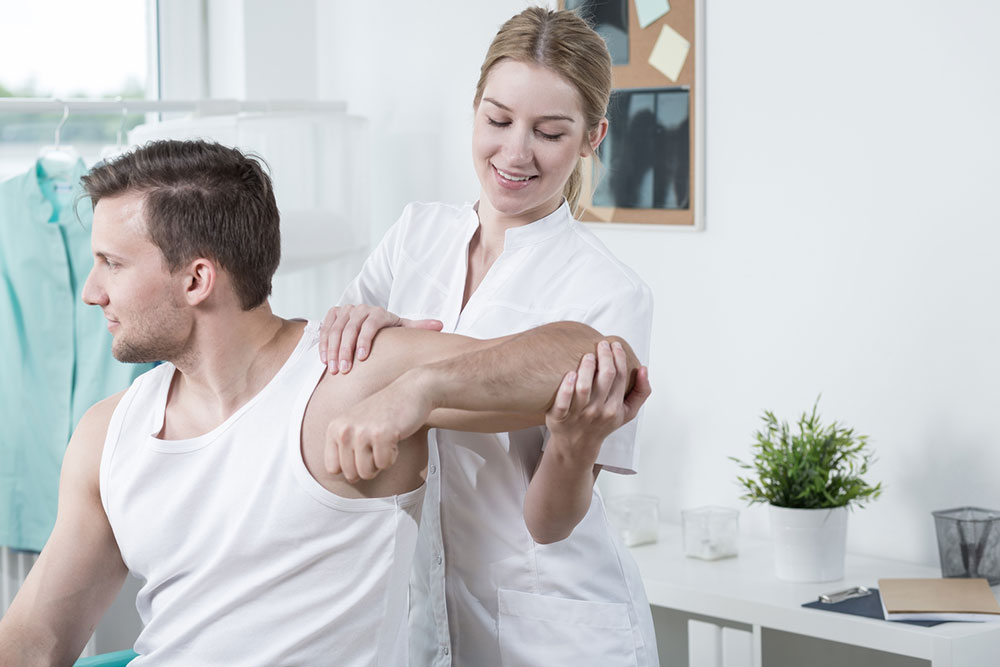Muscle Spasms – Causes and Treatment Options
A spasm or cramp is an involuntary contraction of a muscle. Muscle spasms can happen at any time and are quite painful. It usually goes away on its own, without much treatment. However, if the spasm is extremely painful, and does not resolve by itself or recurs, it is imperative to seek medical care as it may be an indication of a serious underlying medical problem.
Typically, muscle spasms involve a whole muscle, a specific part of it, or various muscles in a group.

These spasms vary in intensity ranging from mild twitches to severe and disabling pain. The spastic muscle may become sensitive to touch and in a few cases, appears visibly distorted. These spasms may last for a couple of seconds or up to 20 minutes or longer. Also, they may recur several times a day.
Muscle spasms can happen to anyone. Irrespective of whether you are old, young, athletic or sedentary, it can happen to you. Also, it can occur while you are sitting, walking, exercising, or even sleeping. Many people who undertake regular physical exercise experience spasms.
Causes of muscle spasms
The exact cause of muscle spasm is not known. However, according to some research studies, here are some factors that can lead to muscle spasms:
- Dehydration
- Insufficient stretching before exercise
- Electrolyte depletion
- Muscle fatigue
- Exercising in high temperatures
- Altered neuromuscular control
- Performing a new activity
Out of all the causes mentioned above, exercising in high temperatures is believed to be the most significant one. When you work out in the heat, you sweat a lot, and sweat contains fluids as well as electrolytes (calcium, magnesium, salt, and potassium). When the level of these vital nutrients falls beyond a certain limit, the chance of muscle spasm increases.
Treatments for muscle spasms
You can treat muscle spasms at home with some simple self-care techniques. You can ask your doctor or physiotherapist to demonstrate some easy stretching exercises to prevent spasms or treat them. However, if you experience recurring muscle spasms, your doctor may recommend some medications to relax and loosen up the muscles.
Some of the most popular and effective treatment methods for muscle spasms are as follows:
Stretching and massage
Stretching the spastic muscles and gently massaging it is an effective treatment for spasms. In the case of a calf cramp, you can try putting your body’s weight on the cramped leg and bending the knee slightly. If you are unable to stand because of the pain, sit down on the floor or a chair and stretch the affected leg.
Straighten your leg, align it with the floor, and pull the top of your foot toward your head. This movement can help in relieving a cramp in the back of the thigh, also known as hamstring spasm. For a muscle spasm in the front thighs, hold a chair and stand on one leg by pulling the affected leg up toward your buttock.
Use a hot or cold compress
You can use a hot or cold compress to relieve the pain that comes with a muscle spasm.
To use a hot compress:
- Take a warm towel or a heating pad wrapped in a thin cloth and apply it to the tight and tense muscles.
- Keep it for 10-15 minutes or till the spasm lasts.
- Alternatively, you can take a warm bath or direct steam from a hot shower onto the affected muscle for relief.
To use a cold compress:
- Wrap a few pieces of ice cubes in a clean washcloth.
- Apply it to the affected area for 10-15 minutes or till the spasm lasts.
Remedies
If the muscle spasms recur or are extremely painful, your doctor may recommend taking certain prescriptions for the same. One can also opt for remedies that improve sleep quality as well. Such treatments especially help if one experiences nighttime spasms that affect one’s sleep. Sometimes, health experts may suggest treatments that ease the muscles and help get rid of the pain.
Apart from these, you can follow some simple spasm treatment options, such as:
- Stopping the activity that caused the spasm
- Improving your fitness level and avoiding muscle fatigue
- Stretching regularly after exercise
- Doing warm-up before a workout
- Keep yourself adequately hydrated
The spasm treatment options mentioned above can help in relieving all types of muscle cramps. However, if the cramps or spasms are severe or constant, you might require the help of a medical professional to get an accurate diagnosis.















